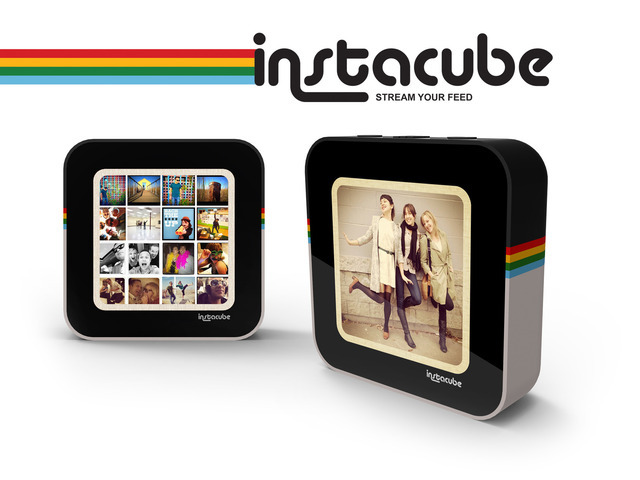The Instacube: Kickstarter Success, Real-World Disaster
 Do you remember, back in August of 2012, when the Instacube took Kickstarter by storm? The product is a square digital picture frame that connects to the Internet and is shaped like the Instagram logo. The product was a hit on the crowdfunding site, raising more than $600,000 and pre-selling a bunch of cubes. Which were supposed to arrive in backers’ hands in the spring of 2013. Only it didn’t. Why?
Do you remember, back in August of 2012, when the Instacube took Kickstarter by storm? The product is a square digital picture frame that connects to the Internet and is shaped like the Instagram logo. The product was a hit on the crowdfunding site, raising more than $600,000 and pre-selling a bunch of cubes. Which were supposed to arrive in backers’ hands in the spring of 2013. Only it didn’t. Why?
We may never know why, because everyone who knows the details of where all that money went has apparently signed a non-disclosure agreement. However, that didn’t stop Savannah Peterson, a marketer who worked on the Instacube project during its funding phase, from discussing the Instacube and the broader challenges of crowdfunding in a session at the South By Southwest tech conference over the weekend.
The Instacube raised its money in the summer of 2012, and was supposed to ship about a year ago. When it didn’t, backers became understandably irate. Peterson can’t discuss a lot of what went down at the company, D2M, but did say that they underestimated the costs and challenges of having new hardware manufactured in China.
When the Instacube didn’t ship, angry investors went after D2M’s employees, attacking them on social media and even tracking down their private contact information and posting it publicly online. Peterson says that she still doesn’t use voicemail, since hers is always crammed with messages from angry Instacube backers. Even though she no longer works for the company.
Manufacturing stuff is hard. Manufacturing new products is hard. It’s especially hard if you’re a startup and don’t have established relationships with suppliers and manufacturers. Kickstarter is trying to prevent undelivered projects in future by requiring that the possible challenges of a project be included in initial crowdfunding requests, and no longer allowing campaigns to be created for hardware that only exists in renderings or sketches.
Good news if you were looking forward to having an Instacube: they’re shipping in a few weeks, the company claims, and people who didn’t back the original Kickstarter project will be able to buy them too. Maybe wait until the ‘Cubes are actually sitting in the warehouse, though.
That’s the thing with Kickstarter and its more liberal counterpart, Indiegogo: as we’ve covered before, crowdfunding sites are not stores. Backing a project in return for a finished item might feel like placing a pre-order, but it really isn’t.
Crowdfunding ‘scammer’ speaks out at SXSW [Daily Dot]
Lessons of a Too-Successful Crowdfunder [Wall Street Journal]
Want more consumer news? Visit our parent organization, Consumer Reports, for the latest on scams, recalls, and other consumer issues.

